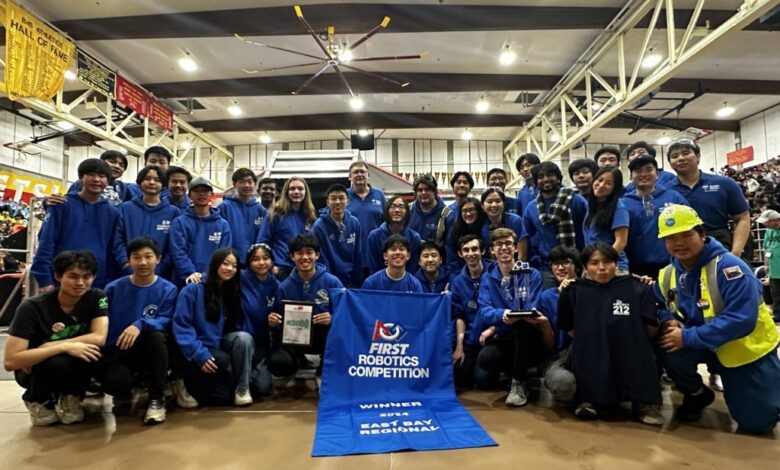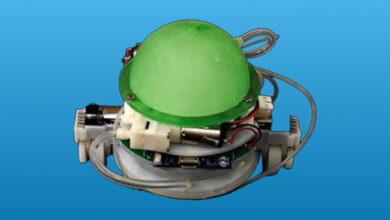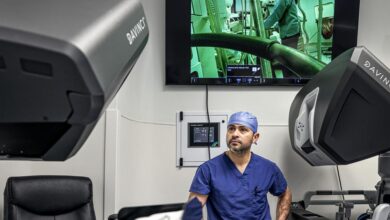World Championships – Pasadena Star News

Titanium Robotics from San Marino High School. They are on their way to the Robotics world championships in Houston, a first for the club founded 23 years ago. (Photo courtesy of Titanium Robotics).
How do you build a championship-worthy robot? Step aside and let the teenagers do it.
The San Marino High School Titanium Robotics team hasn’t had much time to celebrate winning the regionals of the FIRST Robotics Competition last week. The victory earned them a spot at the world championships in Houston this Wednesday, a first for the club founded 23 years ago.
Club adviser Scott Barton said the students were reminded that this moment is historic since this chance to go to “Worlds” also honors everyone who joined the team since 2001.
“This is student-led, student-designed, student-built,” Barton said. “I ask questions, I challenge their decisions, and whether it works or not, they have to live with them and I think they appreciate that.”
The Titanium robotics team is actually a full business model, with its 33 members of 14- to 18-year-olds assigned to engineering and another to business. Three San Marino High School alumni serve as mentors.
“I have kids on the team who never touch the robot, but they write annual reports, make B-rolls and commercials, run social media,” said Barton, who is on his 17th year as adviser. “It’s really hands-on, real-life learning. This is totally extracurricular. They’re doing this for the love of it. They work hard and they have fun being together.”
Makenna Wong, 18, of San Marino followed her brother into the robotics club four years ago. She is president of Titanium’s business team.
“I can’t stress enough how much of this is student-led, and it’s kind of crazy to think a robotics team will teach you about how to run a business, but it has,” she said. “We’ve done fundraisers, handled all the finances, outreached with other groups to make an impact on our community. It’s more than even taking a business class and it’s taught me I can handle and run a business.”
The business, of course, revolves around the robot Mo(Ti)f, the parenthesis-ed “Ti” a nod to the team’s elemental name. Senior Gavin Morris, 17, of San Marino has spent his whole high school career as a member of the robotics engineering team.
“I remember in elementary school, seeing this T-shirt cannon at a science fair and thinking, ‘This is super super cool,” and ever since then, I’ve wanted to do (robotics),” Gavin said. “I really like working with all the other students. We draw in so many amazing people who are dedicated and we all want to work toward this goal of making the best product we can.”
Community support is a central cog in their system, with sponsorships from Boeing and Jet Propulsion Laboratory. Bob French’s children were Titanium members, and he’s continued to boost the club even after they graduated. The longtime Boeing employee volunteered to drive the team robot and other equipment 1,500 miles to Houston.
“He’s been a big part of the team for the last 12 years, and he said he wouldn’t miss this moment for anything,” Barton said.
In Houston, San Marino will face competition from about a dozen Southern California high schools as well as teams from Brazil, Canada, Israel, and Turkey, Canada. While they bested about 60 teams on a single field at the regional competition in Berkeley, the world competition will find them competing with 600 teams on seven fields. About 50,000 people are expected to attend.
The event is organized by FIRST (For Inspiration and Recognition of Science and Technology), a nonprofit that challenges teams to design, program and build a robot using a standard kit of parts and a set of rules to play. Teams also have to build a brand, develop community partnerships and work to promote STEM.
It will be the culmination of six-days-a-week planning sessions, 12-hour workdays and pushing through problems from fundraising logistics to programming issues.
“For me, I’ve learned to how to work with a team and most importantly, to communicate,” Morris said. “When you communicate, things just work.”
For science teacher Barton, taking the field in Houston simply punctuates what is already a success story. His students have cultivated a sense of ownership and pride in their work, even if things didn’t go well.
“We’re not worried,” he said. “We’re going to go and have fun and do the best we can.”



